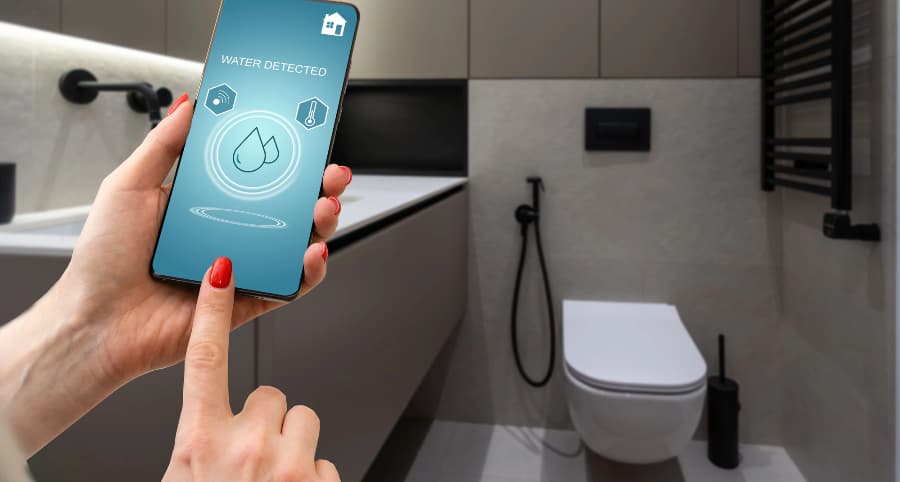How does a water sensor work and why connect one to your Bowling Green smart home?

One small leak at your house can cause significant difficulties and thousands of dollars worth of damage. You must defend against this risk; luckily, there’s a straightforward way to do so. A water sensor is an effective, simple, and budget-friendly solution. See how they work and why you should connect water sensors to your Bowling Green smart home.
How water sensors protect Bowling Green your home
Water enters homes in various ways, whether from a weather-related incident, plumbing issue, appliance breakdown, or human error. However it happens, you must know at once, and this is why water sensors are important. But how precisely do they work?
Most water sensors are conductive and function with two electrodes. When water reaches the electrodes, an electrical connection is created, setting off your alarm. You’ll also find capacitive sensors that emit an electrical field. When water reaches the conductive areas of these sensors, the field is disrupted, and your alarm activates. Optical sensors using infrared LED light are an additional option.
Get more from your water sensor
A few specialized water sensors provide even more defense as they have incorporated temperature sensors. This is an outstanding tool in preventing pipe freezing. If there’s a severe reduction in temperature, you’ll find out immediately. Taking measures before pipes break will protect you from water infiltration and expensive repairs.
Why connect water sensors to your Bowling Green smart home?
When water problems arise, you need to be warned right away. You can achieve this objective by incorporating water sensors into your smart home. Whether you’re on site to hear the alarm or away, you’ll get an automatic alert on your cell phone. As an added benefit, your round-the-clock monitoring agents will be notified. Each moment counts in a water emergency to limit the destruction and disturbance to your family.
Where should you place water sensors?
Any area at risk of flooding is an ideal place for water sensors. Place them in these locations:
- Bathrooms: Place next to tubs or in back of toilets.
- Basements: Water frequently infiltrates lower floors via damaged walls or due to heavy rain or malfunctioning sump pumps.
- Near water heaters or appliances: Any water-using appliance could eventually leak.
- Below sinks: Water sensors are perfect for discovering plumbing leaks in place not easy to see.
- Attics: Detect roof leaks quickly and prevent costly repairs.
Request water sensors with your Vivint smart home
Give your property the robust protection it needs with Vivint’s advanced tools. Our water sensors in Bowling Green connect to your Vivint cell phone app to deliver instant alerts whenever your alarm activates. You also enjoy incorporated temperature sensors to avoid frozen pipes. Discover all the smart home tools available in Bowling Green by dialing (270) 514-2292 today.
